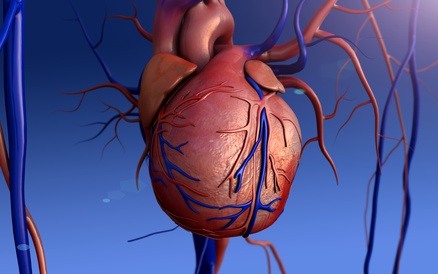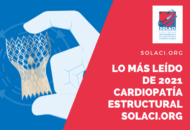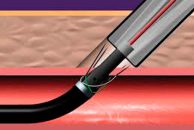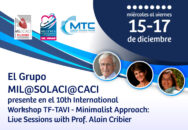Bicuspid aortic valve malformation is the most frequent cardiac malformation (about 1%), and a significant percentage of these cases generate severe aortic stenosis. As we know, transcatheter aortic valve replacement (TAVR) has been developed for tricuspid valves, which are studied in the most important randomized trials for high-, medium-, and low-risk patients. While current information…
Is Cusp Overlapping Projection the New Self-Expandable Valve Implantation Technique?
In Europe and the US, aortic stenosis is the most frequent cause of valve intervention, both surgical and percutaneous, and, as we all know, TAVR has made great progress in this regard. However, this technique has an Achilles heel when it comes to self-expandable valves: definite pacemaker implantation rate is 3 to 4 times higher…
Infective Endocarditis in TAVR: What’s the Best Treatment?
Infective Endocarditis (IE) rate after TAVR ranges from 0.7% to 3.4%, depending on the different analyses, and is comparable to that after SAVR. Close to 50% of patients treated with surgery received a prosthetic valve; in TAVR, the figure is lower, possibly due to the characteristics of patients (even though it remains unclear). Researchers looked…
Last Articles in TAVR in solaci.org
We share the latest works in TAVI published on our website. Last Articles in TAVR in solaci.org 01- HYDRA CE | New Models for TAVR Development The Hydra CE has shown favorable one year efficacy for the new transcatheter aortic valve model, with large effective orifice and low transvalvular gradient associated to an acceptable complications rate. With this study,…
The Most Relevant of 2021 In Structural Heart Disease
This last year, new data in structural heart disease gave way to changes in practices and new hypotheses, when not simply further justified the already existing evidence. In this new editorial section, we share the most relevant of last year’s works to keep you up to speed on the main topics in the field. The…
The Most Read Articles of 2021: Structural Heart Disease
A new year is coming to an end and at SOLACI we are going over the most read studies on our website, on a vital topic, peripheral vascular disease. Follow us to keep up to date. The Most Read Articles of 2021: Structural Heart Disease 01- Surgeons’ Claim on Low-Risk Patients with Aortic Stenosis Recent…
CHOICE-CLOSURE | Which Closure Device for TAVR is Better?
In patients who undergo transcatheter aortic valve replacement (TAVR) through transfemoral access, a closure device based on plug technology (MANTA VCD) is associated with a higher chance of access-related complications, but with shorter hemostasis time compared with a device with suture technology such as ProGlide VCD. Nowadays, most patients undergo TAVR through transfemoral access. Percutaneous…
The MIL Group present at the 10th International Workshop TF-TAVI – Minimalist Approach: Live Sessions with Prof. Alain Cribier
The Latin American Group of Interventionists continues with their 2021 activities aiming at developing and expanding opportunities for women in the field. In this regard, the MIL@SOLACI@CACI Group will be at the “10th International Workshop TF-TAVI – Minimalist Approach: Live Sessions with Prof. Alain Cribier”. Two operators from the group will be holding live transmissions…
TAVR vs Sutureless Surgical Aortic Valve Replacement in Low-Risk Patients
Sutureless surgical aortic valve replacement (SU-SAVR) has been designed to make surgical valve replacement easier and faster, especially compared against conventional biological valves which require multiple sutures; their rapid deployment translates into reduced cross-clamp and operative time. These valves shorten operating time and are less invasive than conventional surgical valves. Except for sternotomy incisions, they…









